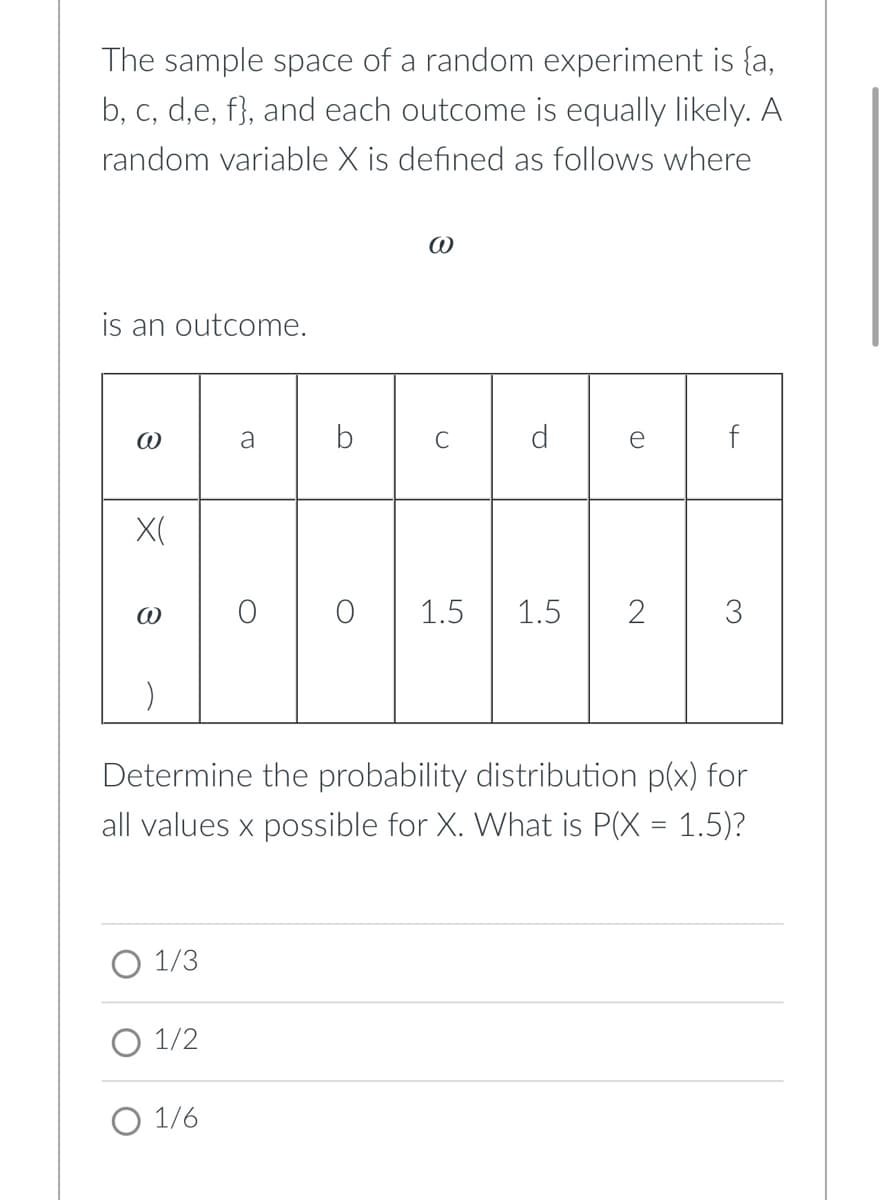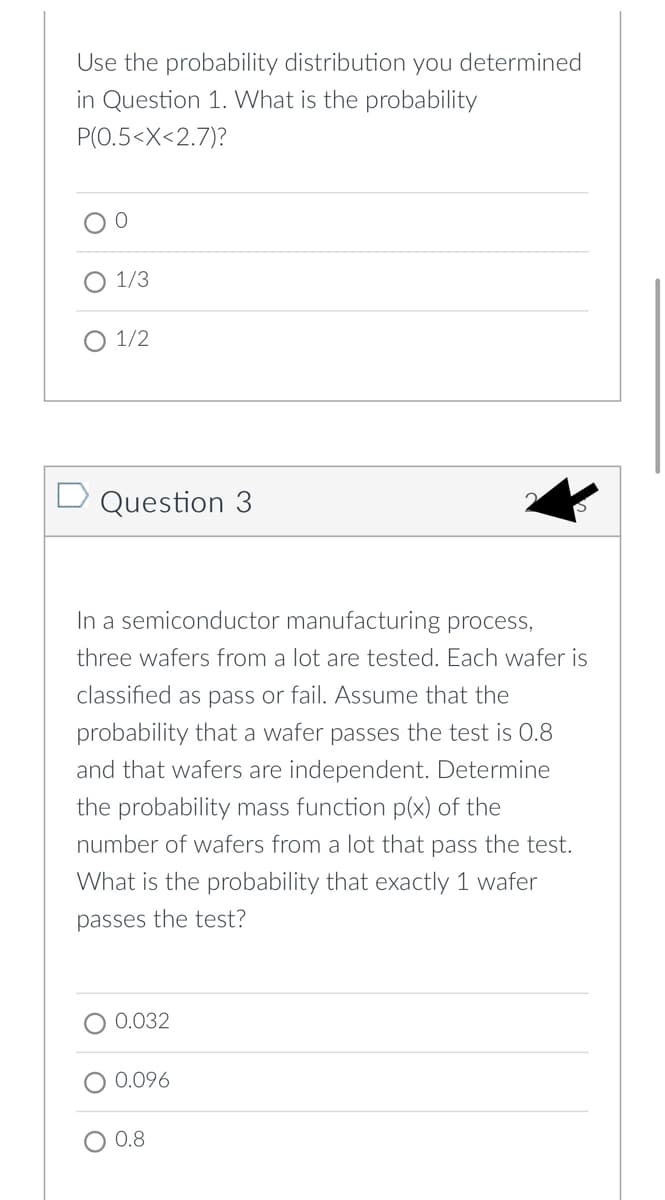The sample space of a random experiment is {a, b, c, d,e, f}, and each outcome is equally likely. A random variable X is defined as follows where is an outcome. a b C d e f 1.5 1.5 2 3 Determine the probability distribution p(x) for all values x possible for X. What is P(X = 1.5)? O 1/3 O 1/2 O 1/6
The sample space of a random experiment is {a, b, c, d,e, f}, and each outcome is equally likely. A random variable X is defined as follows where is an outcome. a b C d e f 1.5 1.5 2 3 Determine the probability distribution p(x) for all values x possible for X. What is P(X = 1.5)? O 1/3 O 1/2 O 1/6
College Algebra
7th Edition
ISBN:9781305115545
Author:James Stewart, Lothar Redlin, Saleem Watson
Publisher:James Stewart, Lothar Redlin, Saleem Watson
Chapter9: Counting And Probability
Section9.3: Binomial Probability
Problem 2E: If a binomial experiment has probability p success, then the probability of failure is...
Related questions
Question
Please answer all if you can! Thank you

Transcribed Image Text:The sample space of a random experiment is {a,
b, c, d,e, f}, and each outcome is equally likely. A
random variable X is defined as follows where
is an outcome.
a
b
C
d
X(
|o 1.5
1.5
3
Determine the probability distribution p(x) for
all values x possible for X. What is P(X = 1.5)?
O 1/3
O 1/2
O 1/6

Transcribed Image Text:Use the probability distribution you determined
in Question 1. What is the probability
P(O.5<X<2.7)?
1/3
1/2
D Question 3
In a semiconductor manufacturing process,
three wafers from a lot are tested. Each wafer is
classified as pass or fail. Assume that the
probability that a wafer passes the test is 0.8
and that wafers are independent. Determine
the probability mass function p(x) of the
number of wafers from a lot that pass the test.
What is the probability that exactly 1 wafer
passes the test?
0.032
0.096
0.8
Expert Solution
This question has been solved!
Explore an expertly crafted, step-by-step solution for a thorough understanding of key concepts.
Step by step
Solved in 4 steps with 2 images

Recommended textbooks for you

College Algebra
Algebra
ISBN:
9781305115545
Author:
James Stewart, Lothar Redlin, Saleem Watson
Publisher:
Cengage Learning

College Algebra (MindTap Course List)
Algebra
ISBN:
9781305652231
Author:
R. David Gustafson, Jeff Hughes
Publisher:
Cengage Learning

Algebra and Trigonometry (MindTap Course List)
Algebra
ISBN:
9781305071742
Author:
James Stewart, Lothar Redlin, Saleem Watson
Publisher:
Cengage Learning

College Algebra
Algebra
ISBN:
9781305115545
Author:
James Stewart, Lothar Redlin, Saleem Watson
Publisher:
Cengage Learning

College Algebra (MindTap Course List)
Algebra
ISBN:
9781305652231
Author:
R. David Gustafson, Jeff Hughes
Publisher:
Cengage Learning

Algebra and Trigonometry (MindTap Course List)
Algebra
ISBN:
9781305071742
Author:
James Stewart, Lothar Redlin, Saleem Watson
Publisher:
Cengage Learning